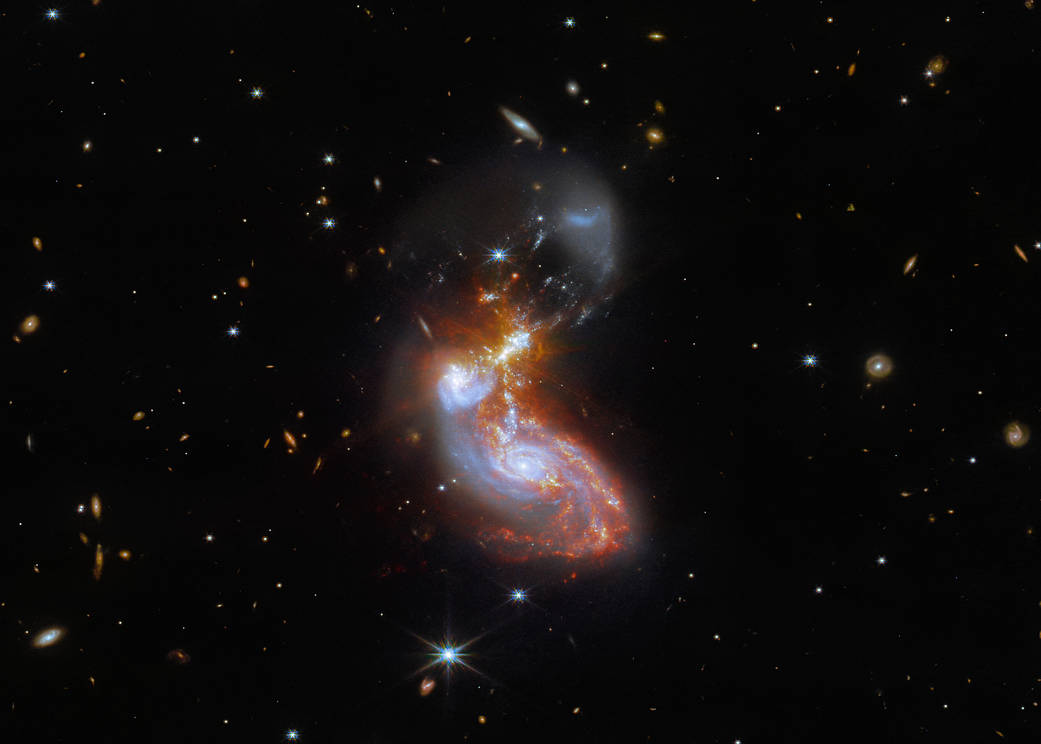James Webb Space Telescope captures chaotic cosmic collision
Webb caught sight of a galactic get-together known as II ZW 96.
The James Webb Space Telescope has captured a pair of galaxies distorting each other as they merge in a great galactic get-together.
The ongoing cosmic collision imaged by Webb is known as II ZW 96. It is roughly 500 million light-years from Earth and located in the constellation Delphinus, according to a Nov. 30 NASA statement.
The image was created by Webb bringing to bear its cutting-edge NIRCam (Near-Infrared Camera) and MIRI (Mid-Infrared Instrument) payloads on II ZW 96 and details how the shape of both galaxies are being distorted by their respective gravitational attraction.
Related: NASA's James Webb Space Telescope: The ultimate guide

NASA scientists note that the spiral arms of the lower galaxy have been twisted out of shape, while the bright cores of both galaxies are connected by the very bright tendrils of star-forming regions that made II ZW 96 such a tempting target for Webb.
The observation is a part of a wider effort by Webb to examine how galaxies evolve, focusing particular on nearby so-called Luminous Infrared Galaxies. These galaxies — of which II ZW 96 is an example — are particularly bright at infrared wavelengths, with luminosities more than 100 billion times that of the sun, according to NASA.
Merging galaxy system II ZW 96 is well known to astronomers and has been observed previously by the Hubble Space Telescope and ground-based telescopes.
Get the Space.com Newsletter
Breaking space news, the latest updates on rocket launches, skywatching events and more!
Follow us on Twitter @Spacedotcom or on Facebook.
Join our Space Forums to keep talking space on the latest missions, night sky and more! And if you have a news tip, correction or comment, let us know at: community@space.com.

Andrew is a freelance space journalist with a focus on reporting on China's rapidly growing space sector. He began writing for Space.com in 2019 and writes for SpaceNews, IEEE Spectrum, National Geographic, Sky & Telescope, New Scientist and others. Andrew first caught the space bug when, as a youngster, he saw Voyager images of other worlds in our solar system for the first time. Away from space, Andrew enjoys trail running in the forests of Finland. You can follow him on Twitter @AJ_FI.









